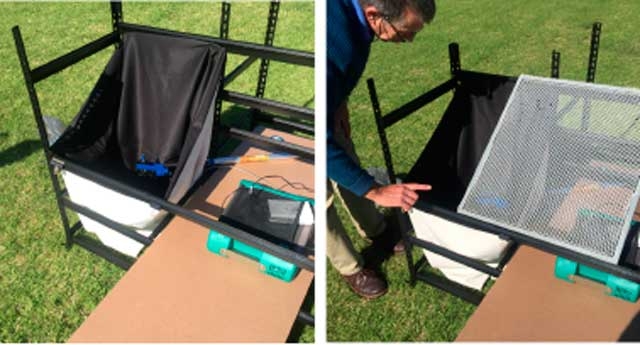Netting intercepts solar radiation reducing the amount of energy reaching fruit and hence lowering the risk of sunburn and colour bleaching of fruit.
However, netting also lowers radiation that is needed for photosynthesis and colour development.
In this article we present some preliminary data on the effects of netting on some important wavelengths of light.
There are many types of netting available for growers to use for hail protection, reducing sun damage and excluding birds and bats. Netting weave density, colour and the supporting structure need to be considered before installation.
Netting weave density basically determines how much light is transmitted. Light hitting the netting weave is either reflected or absorbed and this will largely depend on the colour of the netting.
The wavelength of light that is reflected will be influenced and this can affect leaf photosynthesis, fruit colour development and fruit sunburn.
Similarly, the angle of the netting in relation to the position of the sun will influence how much light is transmitted and could also affect the wavelength.
In the research presented here, we measured solar radiation transmitted through several commonly used nets.
Testing net differences
We tested four netting types: a white HDPE knitted net* and black, grey and crystal HDPE extruded nets#. All three extruded netting had the same fibre diameter and density.
We fitted the netting to a flyscreen frame and positioned it on a metal support that allowed the netting angle to be adjusted to 0, 17° and 34° from the horizontal and facing north. These positions simulated solar incident angles of 72°, 55° and 38°. By hanging a black curtain around the spectrometer we minimised reflected radiation.
To measure solar radiation, we used a multi-spectral radiometer (Figure 1). This instrument measures radiation in 2 nm increments from 350 to 2500 nm.
Wavebands
Wavebands corresponding to solar radiation (350– 2500 nm), ultraviolet A radiation (350–400 nm), photosynthetically active radiation (400–700 nm) and infrared radiation (700–2500 nm) were extracted.
The spectrometer remained stationary below the netting while the netting was moved laterally after each spot measurement to account for any spatial variation in the netting transmission properties.
We took measurements on a clear sky day. Solar position, netting angle to the horizontal, and frame orientation were used to calculate the incident solar angle.
The light that got through
Overall, solar radiation was reduced by approximately 23, 18, 15 and 5 per cent by the white, black, grey and crystal netting, respectively.
(cont. next month)
See this article in Tree Fruit September 2018




















